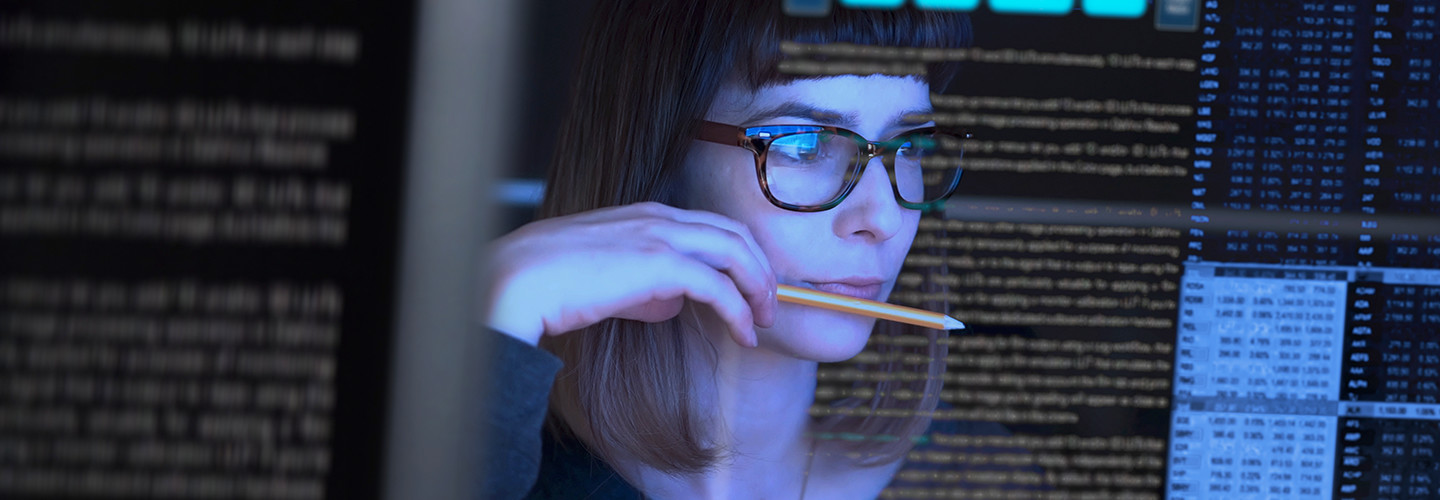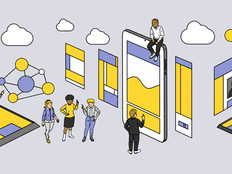What Can Real-Time Data Analytics Do for Higher Education?
Universities are improving their data analytics programs using real-time dashboards that gather and update student data profiles using multiple data points, from financial information to academic performance, to help advisers and faculty provide better support to students.
Some institutions are already experimenting with real-time data collection tools.
At the Worcester Polytechnic Institute, a team of researchers and computer science students are working on an event trends tool they call SETA (scalable event trend analytics), which can find and analyze patterns within high-volume data streams to make decisions on the fly.
These tools have incredible implications for higher education, from campus network management to fast-action security protocols to student safety and academic success.
What Is Real-Time Data Analytics?
Real-time data is information that is collected and immediately disseminated. Instead of collecting a bank of information and then processing it for analysis, the data is pushed out, cleaned and analyzed almost instantly.
Much of the time, real-time data analytics is conducted through edge computing. By analyzing as close to the data source as possible, users can reduce latency, receiving information and making subsequent decisions more quickly.
How Predictive Analytics Helps Universities Reach Their Goals
Universities use a number of data analytics models; one of the most common is to use predictive analytics modules to drive decision-making.
Predictive analytics use historical data, collected over long periods of time, to inform future choices. Universities can use predictive analytics models to help with several agendas, from improving recruitment and retention to meeting students’ needs.
Combined with real-time data analytics, predictive models can use stream processing to calculate what might happen in the future, but at a faster pace.
At the University of Central Florida, for example, administrators are collaborating with Microsoft to use predictive data analytics to understand trends in student and faculty success, university research and alumni donations.
Using data dashboards, UCF can use data points collected in real time to help students who are displaying patterns that show they are struggling academically, improve professors’ curricula and more effectively collect money for new campus initiatives and scholarships.
At the University of Alabama, the use of predictive analytics found that students who asked for copies of their transcripts might be at risk of leaving the university. Now, administrators can note when a student puts in such a request and offer academic and campus resources to encourage those students to stay.
Predictive and Prescriptive Analytics Improve with Real-Time Data
Predictive analytics has been a boon for universities; however, the process requires a data collection period that colleges may not have time for. If an institution decides to begin a predictive analytics program, what happens to the students enrolled during the project’s first year? Will their experiences be distilled down to data points used to help the next wave of students?
Real-time data analytics can be used for prescriptive as well as predictive analytics, allowing universities to collect and analyze data collected and distributed in real time using continuous assessments.
As TechRepublic reports, “Prescriptive analytics is less fortune teller and more medical doctor. Instead of simply predicting what will happen, prescriptive analysis tweaks certain variables to achieve the best possible outcome, and then prescribes that course of action.”
While predictive analytics outlines what is likely to happen in the future, prescriptive analytics show how universities can make something happen now. For example, universities can use an online program to measure a student’s engagement with a specific course. As the student’s interactions with the program progress, that data is processed and evaluated.
“Much like an advisor, the system then recommends an adjustment to the student’s learning path,” Jim Milton, CEO of Campus Management, writes for Forbes. “By collecting, aggregating and analyzing data points across students’ interactions and outcomes, the system prescribes a customized course of action for advisors or faculty that is most likely to help individual students achieve optimal results.”
While prescriptive analytics is helpful, it is best used in tandem with predictive analytics, not instead of it, according to IBM. Each offers different insights that can be useful to universities pursuing an overall goal.
MORE FROM EDTECH: See how one university used data analytics to cut failure rates in half.
Universities Use Real-Time Data Analytics for Various Wins
Real-time data processing applications have opened the door for analytics on college campuses.
At Dartmouth College, IT teams use real-time data collection tools to inform instructional design. Through real-time analytics applications, teams can study metrics including attrition rates, course enrollment sizes and student performance to redesign courses based on students’ needs.
“Data transparency is a better path to advancing student learning at the institutional level than coming up with shared team goals or visions,” Joshua Kim, director of digital learning at the Dartmouth Center for the Advancement of Learning, writes. “Make the data available, and let the work follow where the data leads.”
At the University of Connecticut, Splunk’s real-time analytics tools are put into the hands of students themselves, helping them monitor data collected from a local aquaponics farm.
“When we built out the aquaponics system, students had to write down data onto a notepad,” writes Jonathan Moore, MIS program director at the University of Connecticut School of Business, in a Splunk blog post. “Now, armed with a tablet, students visit each station at the farm and see augmented data dashboards of all of their required metrics in real time.”
Universities are still just scratching the surface of what’s possible with real-time data processing. As data collection tools advance and machine learning tools become more prevalent, universities can expect real-time data analytics to become a permanent fixture on campus.









